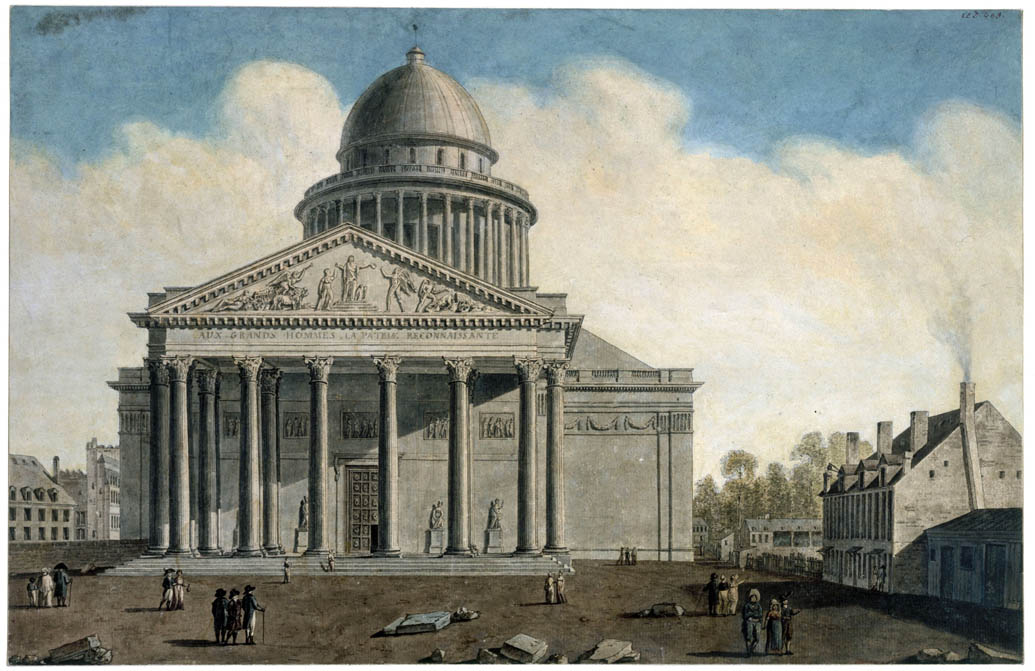The Panthéon and its neighborhood
In 1789, there was a countless number of churches and convents in this neighborhood overlooking Paris. Barely completed in 1790, the grand Sainte-Geneviève church was transformed into a pantheon, based on the model of the Roman Pantheon: patriots wanted a temple worthy of the great men of the Revolution. Already occupied by many colleges and universities, including the Sorbonne, the neighborhood was at the cutting edge of educational utopias: for example, like the National Institution for the Colonies Open to Children of Color.

 Chronology
Chronology
-
April 4, 1791
The remains of deputy Mirabeau are transferred to the Panthéon -
July 11, 1791
The ashes of the philosopher Voltaire are transferred to the Panthéon -
January 24, 1793
The body of deputy Louis-Michel Lepeletier de Saint-Fargeau is transferred to the Panthéon -
Spring 1794
The prophetess Catherine Théot, called the “Mother of God,” presents Robespierre as the new messiah. She attracts hundreds of followers to the Montagne Saint-Geneviève during public congregations -
September 12, 1794
The body of Mirabeau is removed from the Panthéon -
September 21, 1794
The remains of the deputy and journalist Jean-Paul Marat are transferred to the Panthéon -
October 11, 1794
The ashes of the philosopher Jean-Jacques Rousseau are transferred to the Panthéon -
February 8, 1795
The body of Marat is removed from the Panthéon -
1797
The National Institution for the Colonies opens on rue de la Montagne-Sainte-Geneviève





